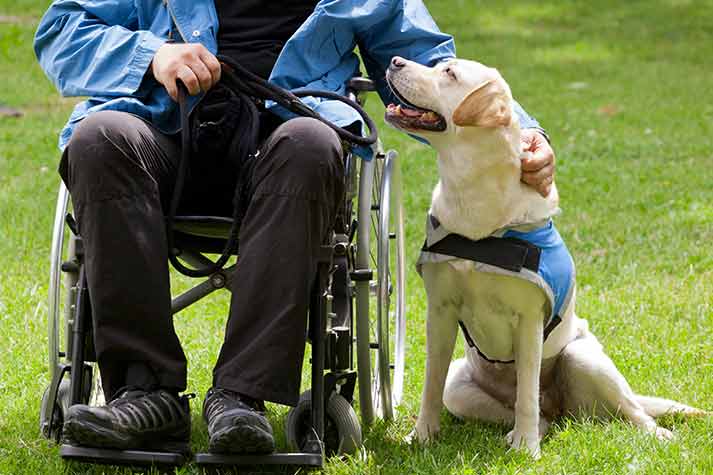


28 May
Dogs have lived alongside mankind for centuries. From hunting and herding to guarding and guiding, the roles they play have evolved with us. More than just helpers or livestock, they are loyal and cherished companions now.
Today, the spectrum of working dogs includes service animals, therapy dogs, emotional support animals (ESAs), and purpose-trained working dogs. While all are valuable, each serves a distinct purpose and is recognized differently under the law.
Service dogs are highly trained animals that help individuals with disabilities navigate daily life. A service dog is typically defined as one that has been individually trained to perform tasks directly related to a person’s disability. This includes physical, sensory, psychiatric, intellectual, or other mental impairments.
Common examples include:
In countries like the USA, service dogs are granted full public access rights. They can accompany their handlers into restaurants, stores, public transportation, and even housing where pets are otherwise not allowed. Airlines must accommodate them, though each carrier has its own protocols; usually requiring the dog to remain at the handler’s feet or lap and stay out of the aisles or emergency exits.
Working dogs are bred and trained for specialized jobs beyond aiding individuals with disabilities. These dogs perform operational roles and often serve alongside military, police, or emergency personnel.
Types of working dogs include:
Unlike service dogs, working dogs typically do not have public access rights unless actively engaged in duty. When they are working, it is crucial that they are not distracted or touched by the public.
Therapy dogs are not trained to help one individual. Instead, they work with their handler (often a volunteer) to bring comfort and emotional support in structured environments such as hospitals, schools, or nursing homes.
What sets therapy dogs apart is their temperament. These dogs are calm, gentle, and remain at ease in unfamiliar surroundings. They are chosen for their sociability and ability to handle unpredictable situations without stress or snapping. Their presence can ease pain, reduce anxiety, and even promote recovery.
Therapy dogs are not considered service animals under the ADA, which means they do not have the right to enter public spaces where pets are prohibited. Most therapy dog programs are administered by non-profits, which provide training, testing, and liability insurance.
The American Kennel Club’s Canine Good Citizen (CGC) program is often a required stepping stone before entering a therapy dog program.
Unlike service or therapy dogs, emotional support animals (ESAs) are not required to undergo specialized training. Their role is to provide companionship and emotional comfort to individuals struggling with mental health conditions such as depression, anxiety, PTSD, or phobias.
To be recognized as an ESA, the owner must obtain a formal letter from a licensed mental health professional stating the animal’s role in supporting their condition. These animals do not perform specific tasks, which is why they are not recognized as service dogs under the ADA.
Emotional support animals have limited legal protections. While they are not allowed in all public places, housing laws under the Fair Housing Act allow them in “no pet” properties when proper documentation is provided. However, as of 2021, airlines are no longer required to treat ESAs as service animals, meaning most are now subject to pet fees and carrier restrictions during flights.
While the lines between these categories might blur in casual conversation, they are different in terms of distinction and legality. Understanding the differences helps us respect the boundaries these dogs need to do their jobs and appreciate the sheer number of ways they make our lives better.
Service dogs are protected by law and perform essential tasks tied to a disability. Working dogs perform mission-based duties for organizations or agencies. Therapy dogs offer emotional support in shared settings, while emotional support animals provide companionship at home.

AUTHOR’S BIO
ARSH BHARDWAJ
I am passionate about language, storytelling and the human urge to connect Having paid close attention to marketing and branding as a craft for some time, I'm eager as ever to indulge my passion for prose.